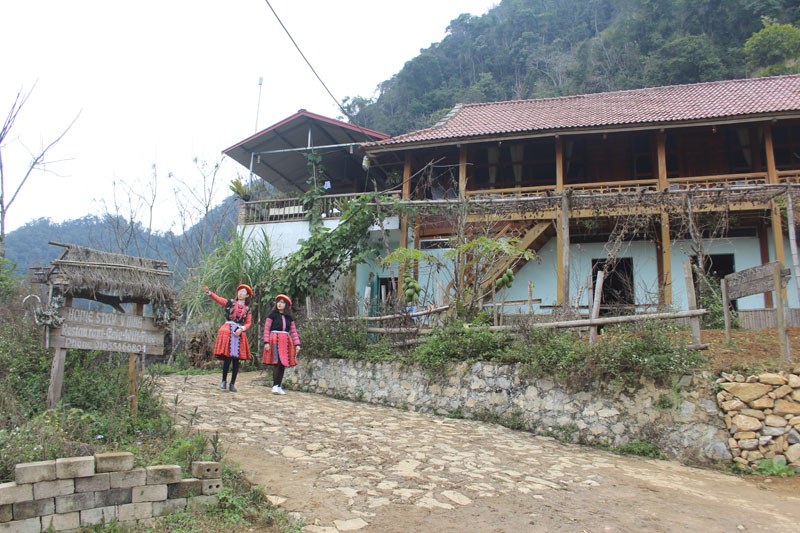
(HBO) – The Mong ethnic people in Hang Kia commune, Mai Chau district were long used to farming and hunting. Till one day, several households in Hang Kia village thought of opening lodging facilities to attract tourists, since then a number of standard home-stay services have sprung up.
Sung Y Mua home-stay facility lies in a
"gateway” location in Hang Kia commune. It sits along a main road and features
a space similar to the architecture of the Mong people, from land shape,
decorations to eye-catching and harmonious
layout of the living room. According to Sung Y Mua, owner of the home-stay
facility, she always puts herself in visitors’ shoes to learn about their needs
and tastes, thus making them feel the most comfortable.
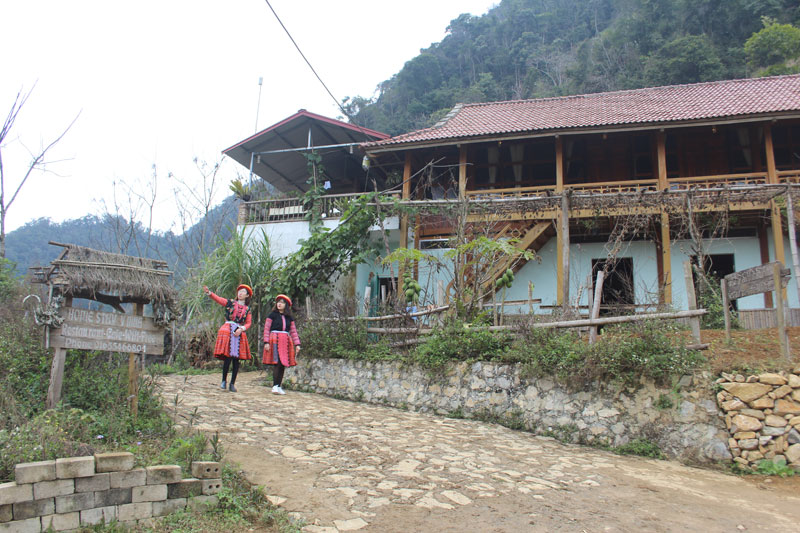
Sung Y Mua in Mong earthen-walled
house attracts many tourists
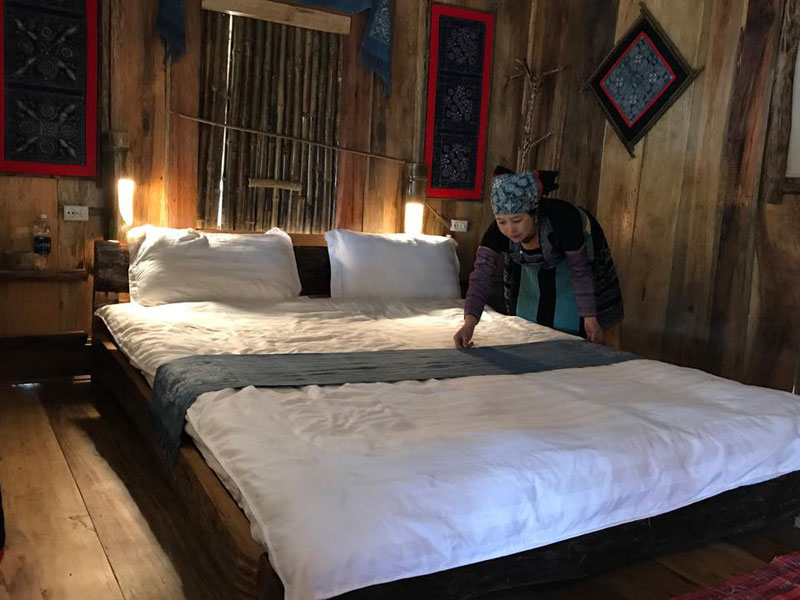
Well-furnished accommodation
space
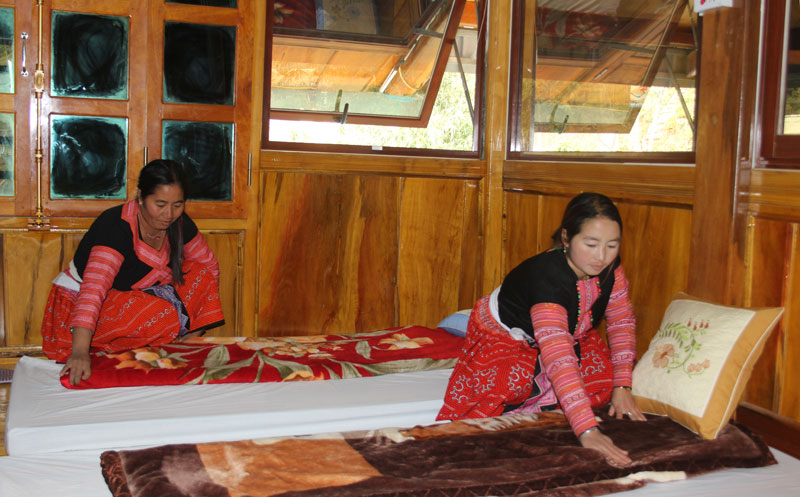
Home-stay facility always
offers good services
Located nearby, Son Bac home-stay
facility on hill A1, Hang Kia 3 hamlet is also one of the two familiar tourist destinations
in Hang Kia valley. Its owner Giang Y Dua invested in infrastructure to make it
easier for visitors to go up and down the top of the hill from which they could
see a panorama of the valley and a zigzag path in Pa Khom hamlet leading to
neighbouring Laos.
They are two out of the four
home-stay facilities developed in Hang Kia valley since 2016. Each could
accommodate a maximum of 50 guests on average per day. Visitor Ho Khac Tien from
Hoa Binh city said living conditions here are quite good so that more tourists
will come.
Via training, the catering
staff here has become more professional and considerate. Many kinds of foods
are cooked in Mong ethnic style.
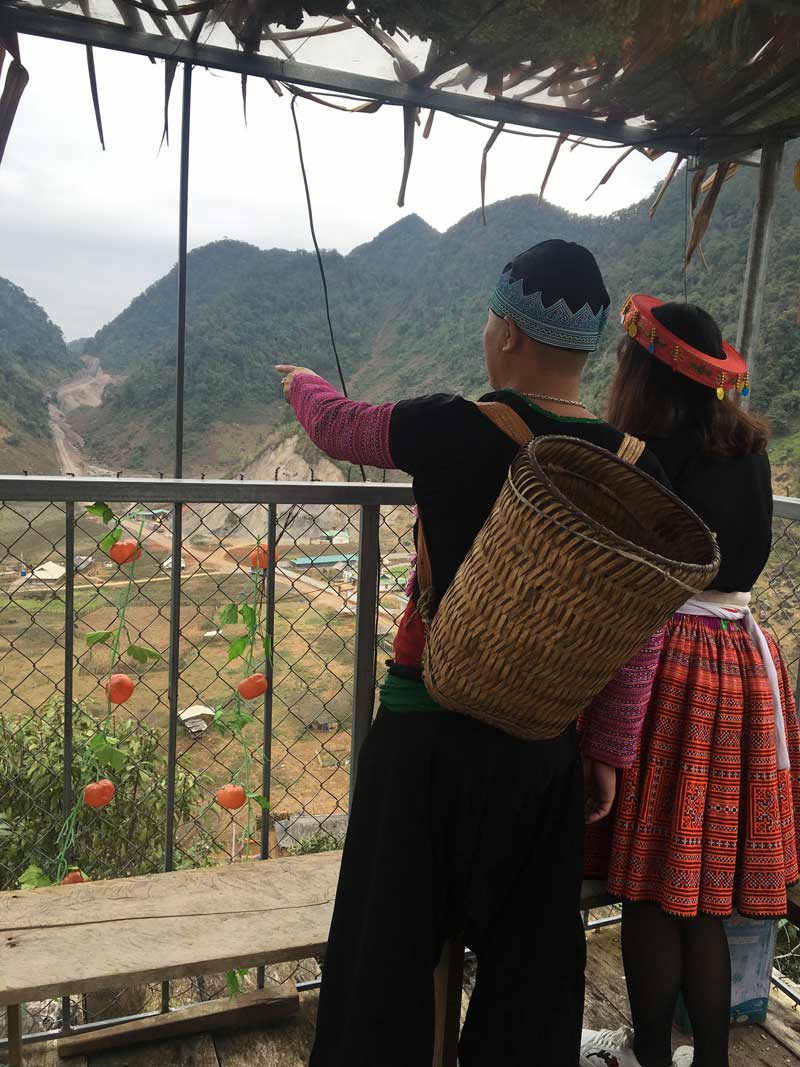
From the top of hill A1,
tourists could see a panorama of the beautiful Hang Kia valley.
Domestic and foreign visitors
are impressed by the Mong people’s home-stay facilities where they could
experience the best services such as exploring nature with tour guides, taking
a hunting tour, growing rice and corn, picking up plums and peaches, weaving
linen, drawing paintings using bee wax, playing folk games, and joining music
exchanges.
They are also able to hire
bicycles to travel around Hang Kia, borrow Mong costumes and go hiking,
climbing mountain, stroll around blooming plum and peach forests. Foot soaking
with herbs, free wifi and karaoke services are also available./.
Spanning thousands of hectares and winding gracefully along mountain slopes, hillsides, and riverbanks, the terraced rice fields of Lac Son District present a stunning and captivating beauty. This region, renowned for its remarkable terraced landscapes, is also the centre of Hoa Binh Culture known for numerous archaeological sites.
The life of Mong people in Hang Kia and Pa Co communes of Mai Chau district has improved much thanks to tourism development.
The man-made Hoa Binh Lake, with a water surface area of approximately 9,000 hectares and a capacity of 9.45 billion cubic meters, stretches over 200 kilometers from Hoa Binh to Son La provinces. With the goal of developing into a national tourism area, the Hoa Binh Lake tourism area is expected to not only become the largest tourism centre in the province but also one of the 12 key tourist destinations in the northern midland and mountainous region of Vietnam.
Da Bia hamlet, now Duc Phong, in Tien Phong commune, Da Bac district, was once almost isolated from the outside as the only way to the hamlet was to get a boat ride across the Hoa Binh reservoir. However, as its tourism potential has been unleashed, the hamlet has established itself as one of the most attractive destinations on the tourism map. It has even received the ASEAN Community-Based Tourism Awards in 2019.
In the first 9 months of 2024, Mai Chau district, Hoa Binh province welcomed over 684 thousand visitors to visit and relax. In which, over 516 thousand domestic visitors and more than 168 thousand international visitors. Total revenue from tourism is estimated at over 821 billion VND.
Da Bac district, bestowed with stunning landscapes, is developing ecological and resort tourism offerings. Several tourist sites, put into operation this year, has attracted throngs of high-spending and young domestic visitors.






